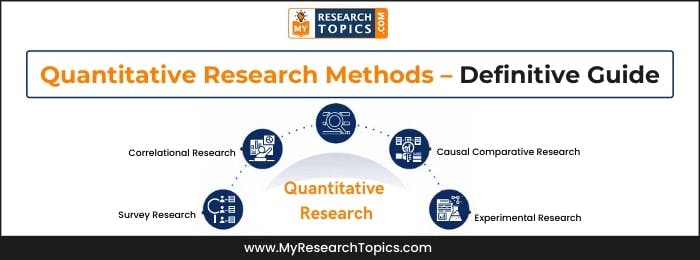Reliability vs. Validity in Research
Published 16 October, 2023

Reliability and validity represent the effectiveness of the different research methods applied in the investigation. They are basically two crucial parts of the research. There is a direct relationship between reliability and validity. The reliability of the process used for measuring outcomes is very much important in order to make the investigation to be valid.
The validity and reliability of research are important as it determines the usefulness, relevance, and accuracy of a study. They can both be measured using a variety of statistical methods, but it is important to understand their definitions and differences before choosing which one to use in your studies. This post will explore the difference between reliability and validity in research.
Introduction of Reliability and Validity
Definition of Reliability
Reliability mainly is the level measures that are consistent. Reliability is a measure of how stable, consistent or repeatable the test scores are. You can also think about it as an ability to have similar results from a study each time you do it.
There are mainly four types of reliability, as follows:
- Test-Retest Reliability: It includes the measurement of consistency over a period of time. This means that the measurement tool which you are using generates the same result when a specific test is repeated.
For example, the investigation was performed for measuring the level of job satisfaction among employees. Employers were provided with a questionnaire where they have provided their responses. After a week the same questionnaire has been distributed and the same answers were given by participants, which shows high reliability. - Inter-Rate Reliability: It refers to the extent to which the outcome remains consistent when different researchers perform the same measurement.
For example, Different teachers check the cardiology Exam paper of one student. And every teacher has allotted different marks to students in a particular subject which represents low inter-rater reliability. As every teacher has applied different criteria for checking the exam paper. - Parallel Forms Reliability: It is a measure of the consistency and accuracy in different versions of an assessment tool.
For example, The researcher has designed a Questionnaire for measuring financial risk faced by the organization, all the questions in the questionnaire are categorized into two segments, and participants are also categorized. The teams have been asked to perform tests then the comparison between two different tests performed by both teams A and B has been done and findings reveal the same results which indicate a high parallel form of reliability. - Internal Consistency Reliability: It can be defined as extending up to which specific measurement is consistent in itself.
For example, Investigator has designed A questionnaire for measuring the level of motivation in employees. If you categorize outcomes into two parts it should represent the powerful correlation between two different outcomes. If in case there is no correlation between results it represents low internal consistency.
Definition of Validity
Validity represents the degree up to which different methods used produce accurate results. Validity is the degree to which a measure measures what it’s intended to. Research with high validity produces accurate results that correspond in reality – whether they’re physical or social properties, characteristics, and variations.
It is very much essential for you to think about the reliability and validity of the study while making the choice of research design or selecting different techniques for performing an investigation.
There are different types of validity, as follows:
- Construct Validity: Observation done through using specific measures matches your knowledge about a particular concept.
For example, the Researcher has designed a questionnaire for measuring the level of motivation in workers. You can analyze motivation by evaluating of other related characteristics such as Self-confidence, work knowledge, etc. As there is a powerful correlation between the above traits and level of motivation among employees which represents highly construct validity? - Content Validity: The researcher is measuring the level up to which a particular technique is able to cover the different facets of the idea.
For example, the Researcher has designed a special test for measuring the student’s level of English in terms of speaking, writing, and understanding. According to the experts, understanding is also important while judging the student’s English language skill. - Criterion Validity: Degree up to which outcomes of a specific measurement are related to other suitable measures of similar thought.
For example, Researchers conducted for analysis the people’s opinion about the particular political party if in case the findings of the investigation match with the actual result of election this will indicate high criterion reliability.
Comparison between reliability and validity
| Basis | Validity | Reliability |
| Meaning | Validity basically is considered to be a circumstance when the specific tool is correctly measuring the thing which it is expected to measure. | Reliability can be defined as the level up to which a specific test is able to generate the same results or not when it is repeated. |
| Relation | The valid tool is considered to be as reliable. | An instrument or tool which is reliable cannot be considered to be as valid. |
| Role in evaluation | Validity plays a very important role in evaluation. | Reliability has no role to play in the evaluation procedure. |
| Assessment | Measuring the validity of the study is one of the complex and hard tasks. | It is quite an easy task to measure reliability. |
| Focus | Validity mainly concentrates on checking whether a specific tool has generated an expected outcome or not. | It mainly focuses on analyzing the way a specific instrument producer’s the consistent outcome. |
| Techniques for improvements |
|
|
| Example | If you are measuring the temperature of the water, the instrument used shows different results every time besides you have taken all initiatives to control the temperature, you close down the knob of gas after that also the next time when the measurement is taken thermometer represents the same result. Therefore, it is assumed that the thermometer is not functioning properly and the measure is considered to be as invalid. | The temperature of hot milk is measured in the same situation and the thermometer also shows the same result every time, therefore the result can be considered to be highly reliable. |
Key differences between reliability and validity
The following points describe the fundamental distinctions between validity and reliability:
- Validity is defined as how well a scale measures what it was designed to gauge, while reliability refers to whether or not repeated measurements will produce consistent results if done multiple times on an identical object.
- Validity and reliability are two pillars of psychological testing. Validation focuses on accuracy, which checks whether the scale produces expected results or not. Conversely, reliability concentrates on precision to measure the extent to which a test is consistent in producing repeatable outcomes over time.
- When evaluating a multi-item scale, the most important consideration is validity. Validity refers to whether or not it accurately measures what you want it to measure.
- Factors that affect validity are purpose, process, purpose, theory matters, logical implications, etc. whereas factors that affect reliability are test length, test score variability, heterogenicity, etc.
Conclusion
The world of research is constantly changing, and it’s important to be on top of these changes. Learning the difference between validity and reliability in research can help you stay ahead of the curve when evaluating new studies or drawing conclusions from existing ones. When looking at a study for purposes such as determining whether something should be included in your diet, make sure that its methods have been validated before making any decisions about what to do with this information. If you are interested in learning more about how we can help you pick out reliable sources so that you know where to turn for accurate data, contact us today!
Other Related Guides
- Research Project Questions
- Types of Validity in Research – Explained With Examples
- Schizophrenia Sample Research Paper
- Quantitative Research Methods – Definitive Guide
- Research Paper On Homelessness For College Students
- How to Study for Biology Final Examination
- Textual Analysis in Research / Methods of Analyzing Text
- A Guide to Start Research Process – Introduction, Procedure and Tips
- Research Findings – Objectives , Importance and Techniques
- Topic Sentences in Research Paper – Meaning, Parts, Importance, Procedure and Techniques












